-
Car Reviews
- Car News
-
Car Comparisons
Latest comparisons
- Chasing Deals
The flagship Prado is now a $100,000–plus family 4WD, but is it six-figure good?
There’s only one contender for most-hyped new car of the past 12 months, and that’s the new-generation Toyota Prado.
The big question is whether the perennially popular family 4WD lives up to the immense anticipation … or disappoints.
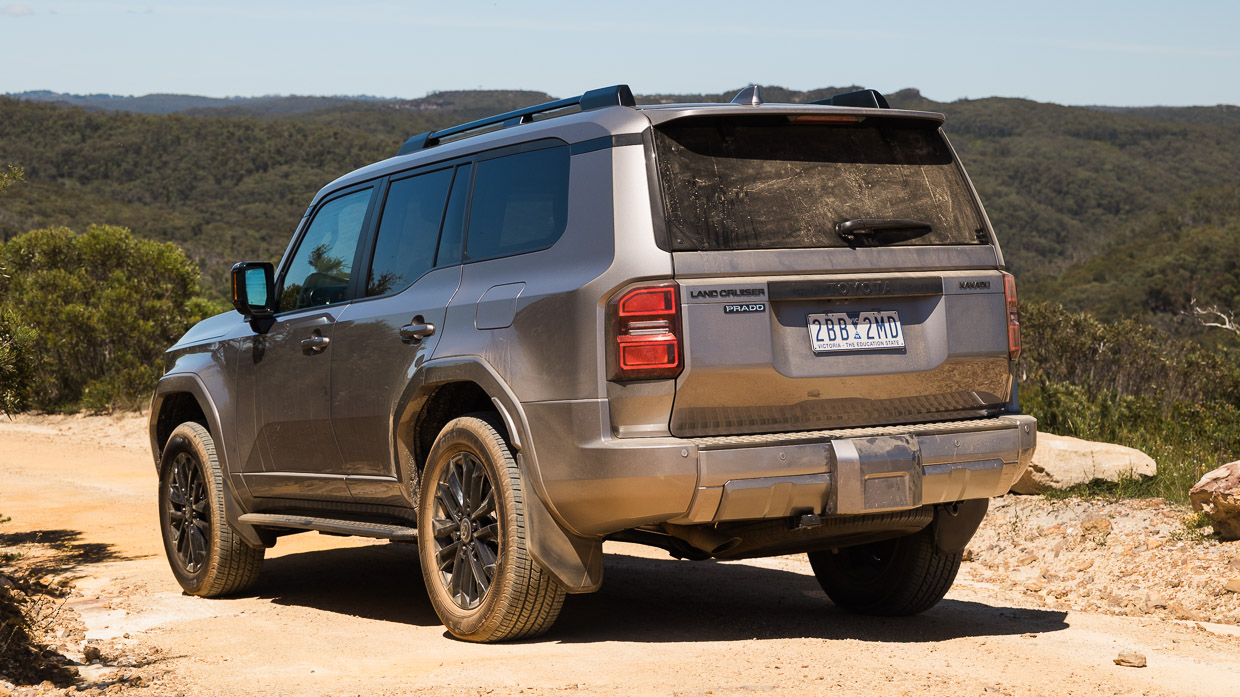
It certainly has a price tag that brings expectations – the flagship Kakadu we’re reviewing here costs more than $100,000 drive-away after increasing by more than $12,500 over the outgoing range-topper.
The $99,990, top-of-the-tree Prado is extensively equipped. Inside, there’s leather-accented seating, electric front seats with memory and heating/ventilation, a 14-speaker JBL audio,
Extras over the $87,400 VX (a better comparison than the $92,700 Altitude that’s more off-road focused and a five-seater only) include heated/ventilated second-row outboard seats, heated steering wheel, panoramic moonroof, head-up display, and digital rear-view mirror.
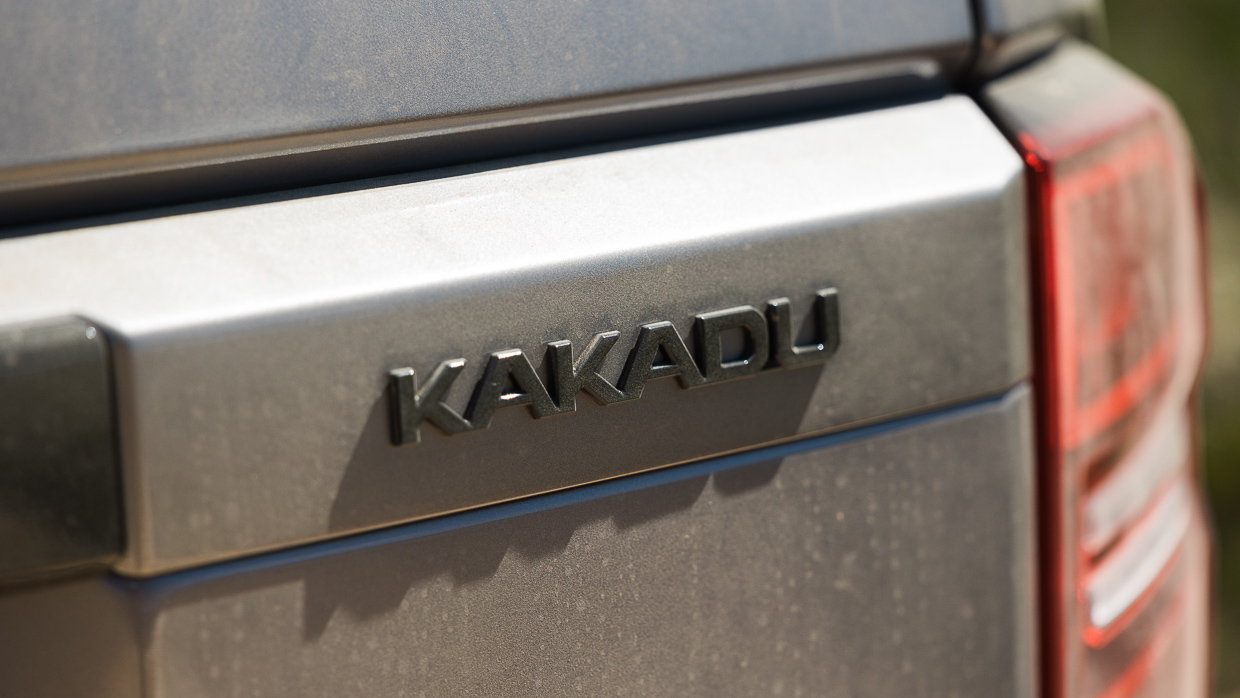
Kakadu also gains exclusive illuminated side steps.
There are no feature options available, though Toyota offers an extensive range of accessories to suit the varying lifestyles of Australians.
There’s a stylishly rugged aesthetic to the Prado’s cabin, with chunky furnishings – including the octagonal vents and climate control surround that’s central to the dash design.
For a six-figure vehicle, materials quality isn’t excellent everywhere. While soft plastics dominate the cabin’s upper half, the headlining has all the tactility of an egg carton.
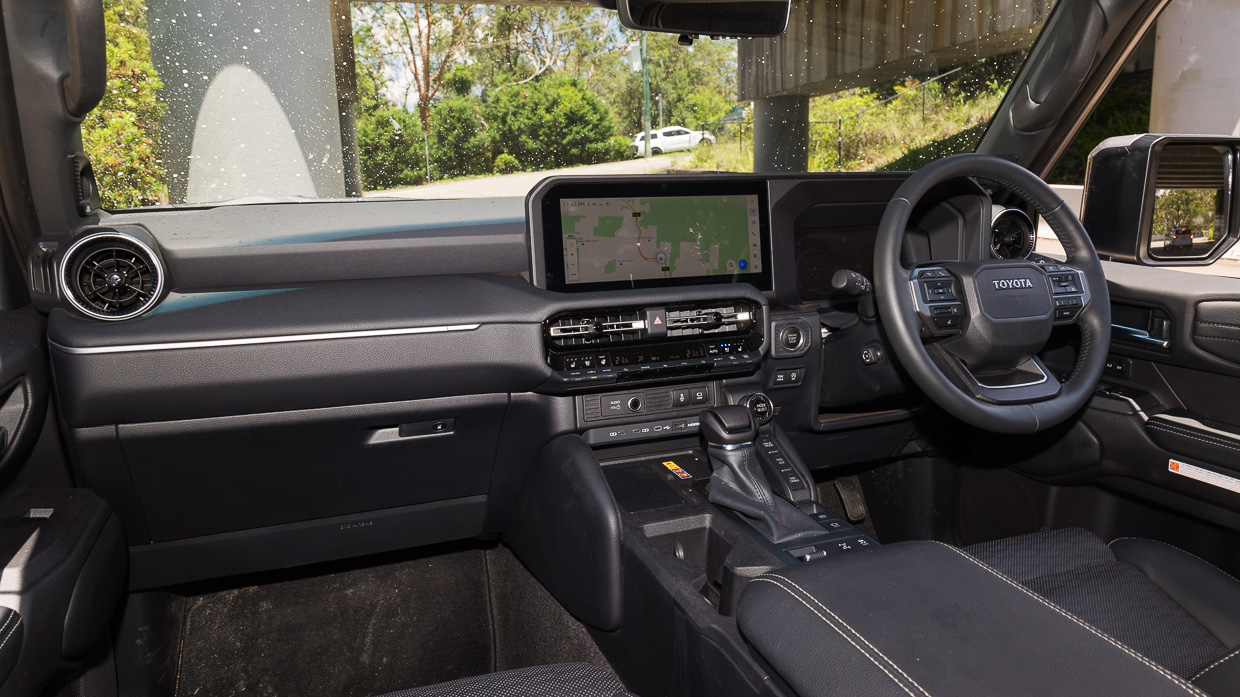

Neither has Toyota nailed front-cabin practicality. The door cubbies only just fit a 750ml drinks bottle and the glovebox is relatively small (and includes a fragile-feeling insert that helps to store the thick owner’s manual.
A refrigerated rear console cubby is there (as it is in VX and Altitude models) to keep drinks cool on hot days.
There are plenty of ticks for contemporary infotainment: 12.3-inch touchscreen, wireless smartphone integration, and six USB-C ports throughout the cabin.
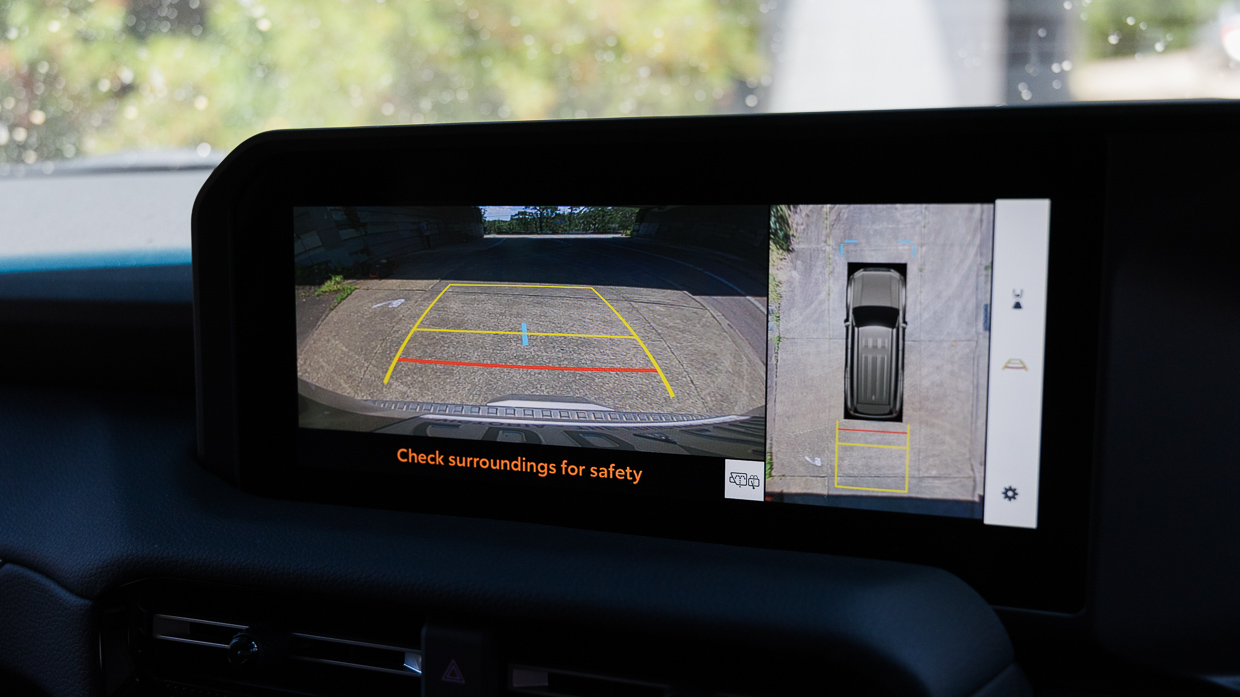
Owners are likely to quickly hook up to either Apple CarPlay or Android Auto as Toyota’s infotainment systems continue to be dull in presentation and limited in scope.
A head-up display is available in only one other Prado than the Kakadu (the one-model-down Altitude).
The digital driver display, common to all variants, offers three customised layouts, including an Off-road layout that adds gradient, tilt angle, and pitch-and-roll visuals. (An Off-road section is also available on the touchscreen.)
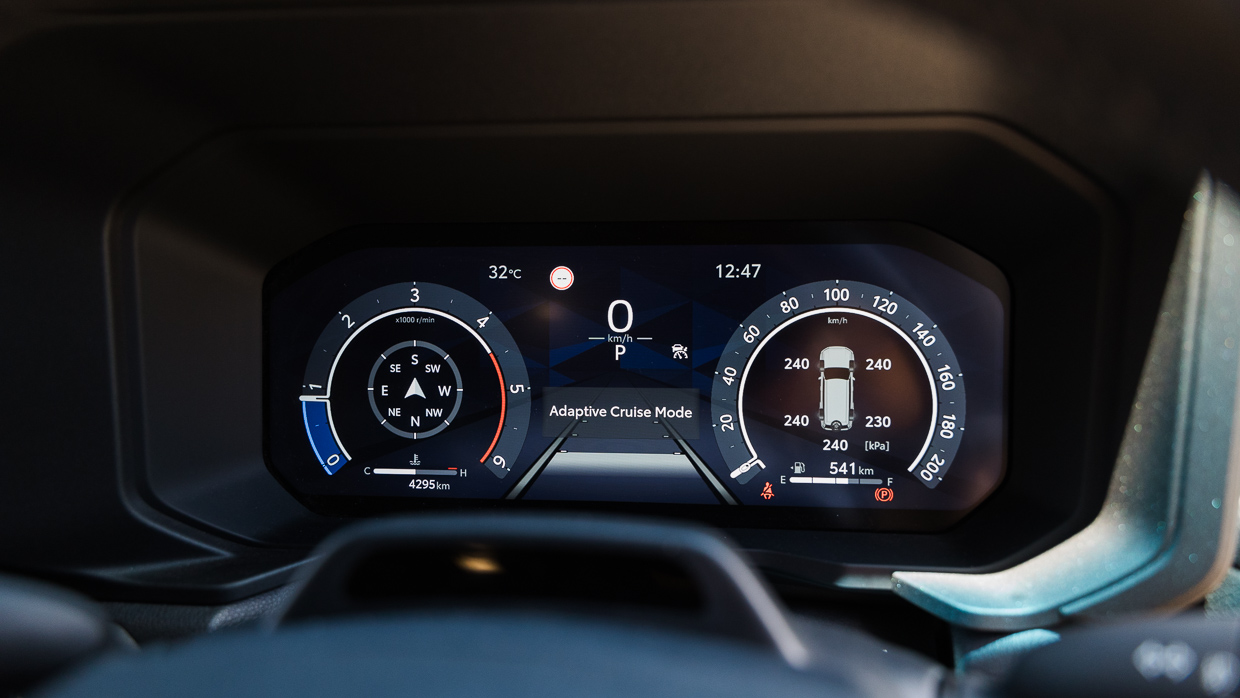
The Kakadu’s panoramic ‘moonroof’ is smaller than your average pano-sunroof, though still brings welcome extra light to the Prado’s cabin – and that includes the rear seat.
Rear passengers can look after themselves with dedicated temperature and fan control, plus the added bonus of heating and ventilation for the outboards. They can adjust their seatback angle, too.
There’s plenty of legroom, though the leather-accent bench seat is slippery – compounded by limited seat support.
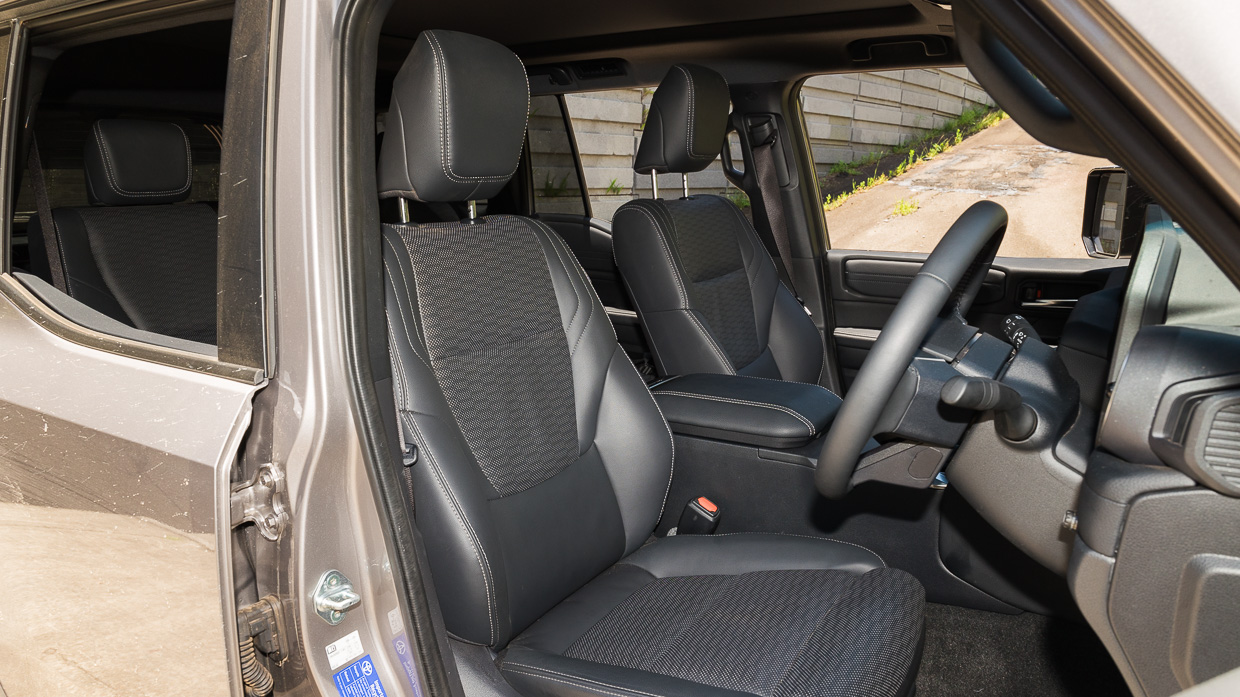
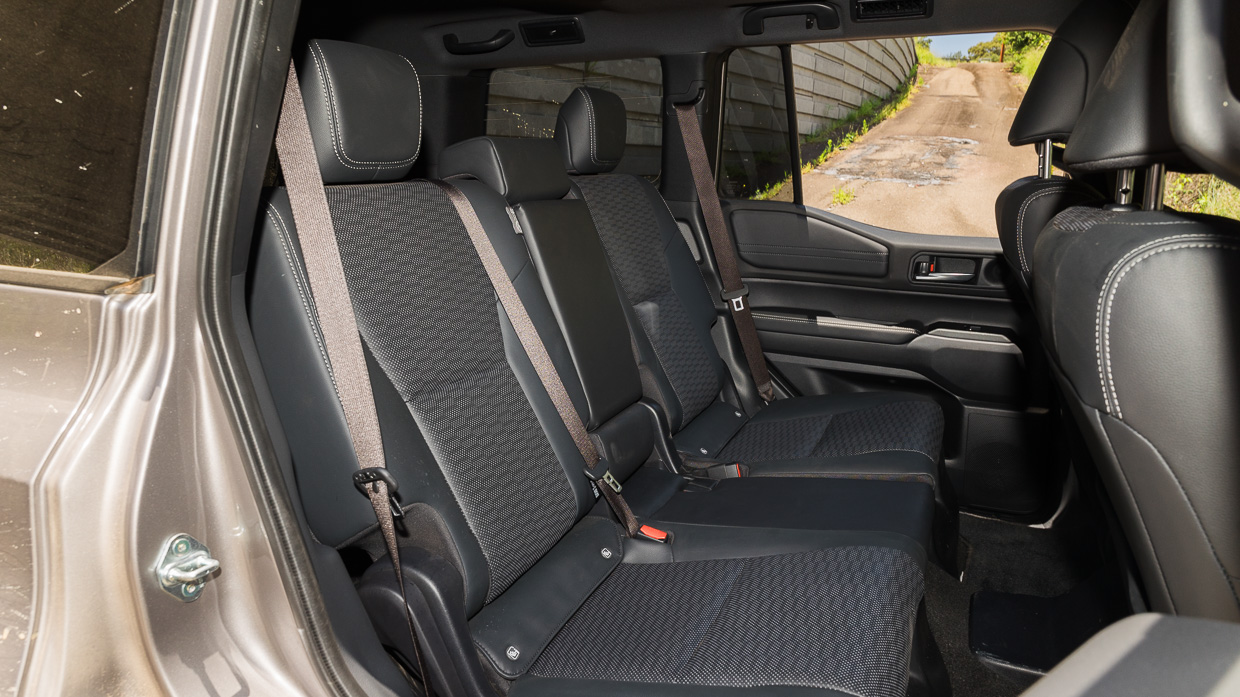
The second-row seats tumble forward with the pull of a lever for easy third-row access. Adults can fit in there, but they’d want the journey to be relatively short. Even for average-height adults, headroom is tight and the high floor forces an uncomfortable knees-up position.
Versatility is an essential element of any big family SUV yet Toyota’s interior development team seems to have omitted this on its checklist; certainly for the seven-seater versions of the Prado.
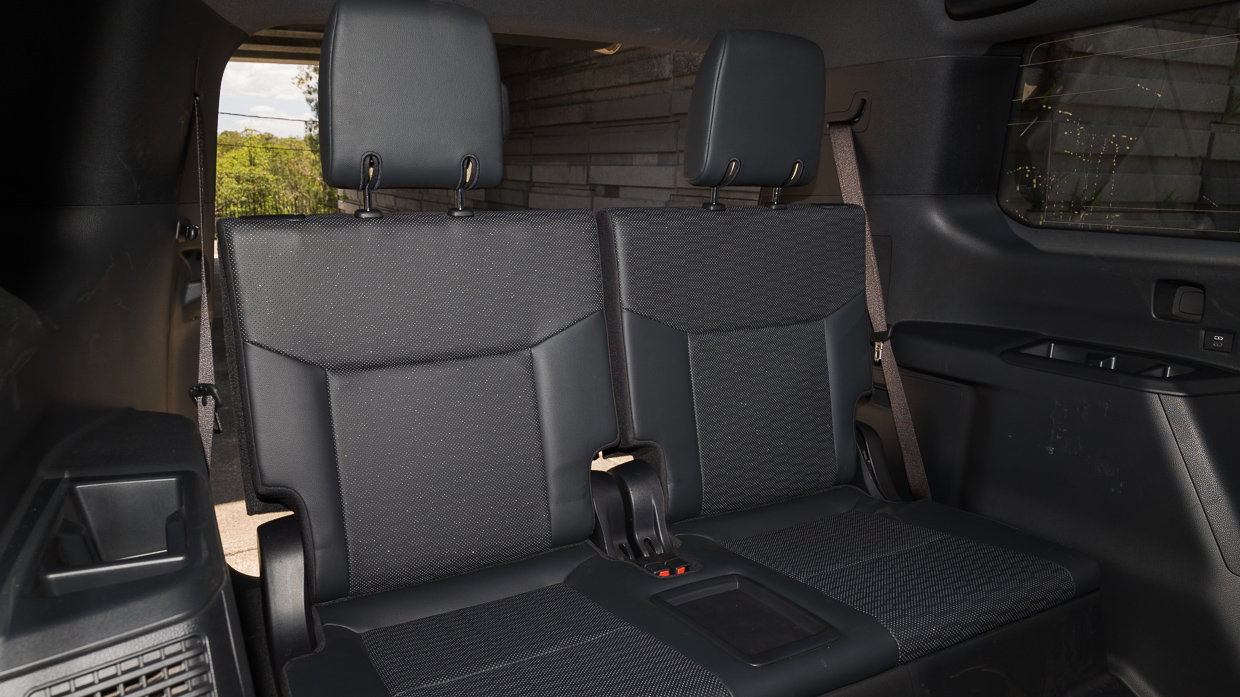
Limitations begin with a second-row that doesn’t slide and a third row that lacks child-seat top-tether points let alone Isofix anchors. The former is offered by the Prado’s arch-rival, the Ford Everest.
Then there’s the boot that is compromised by the Prado’s 48-volt mild-hybrid battery, which – in concert with a full-size spare positioned under the vehicle (like the previous Prado with the flat-tailgate option) – pushes up the floor height.
The boot area isn’t flat, either, as the third-row seats just fold down rather than collapsing into the floor as with the best seven-seaters – including the Everest.
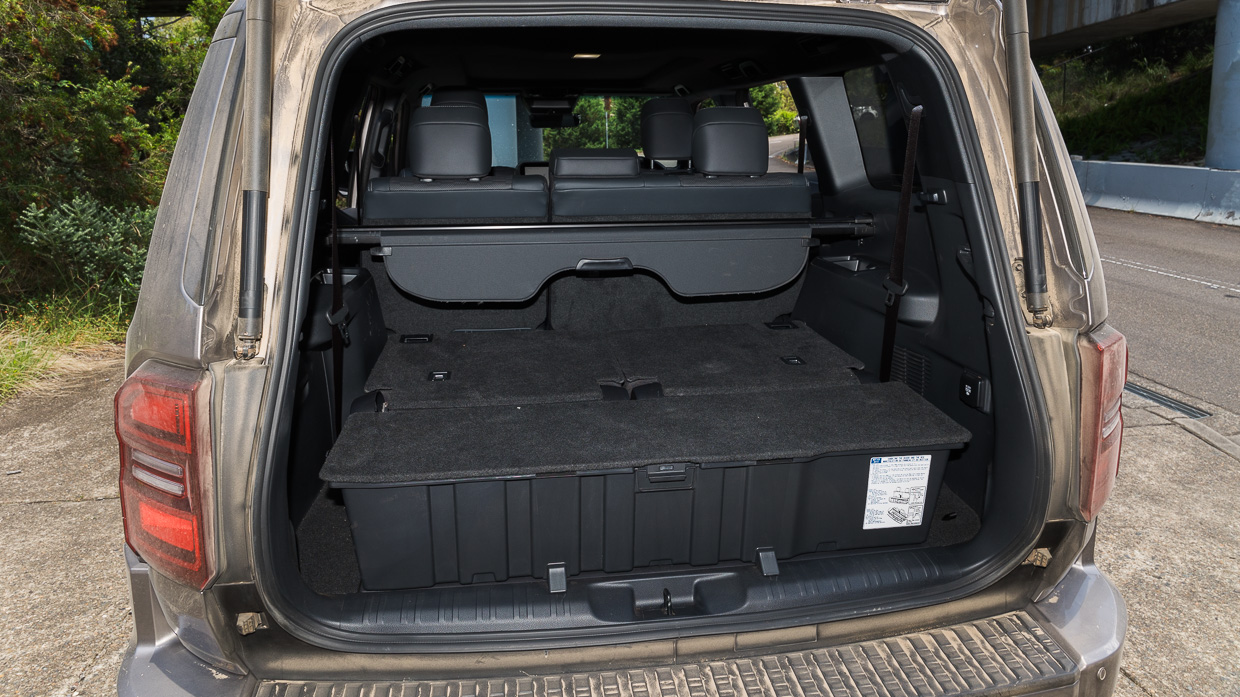
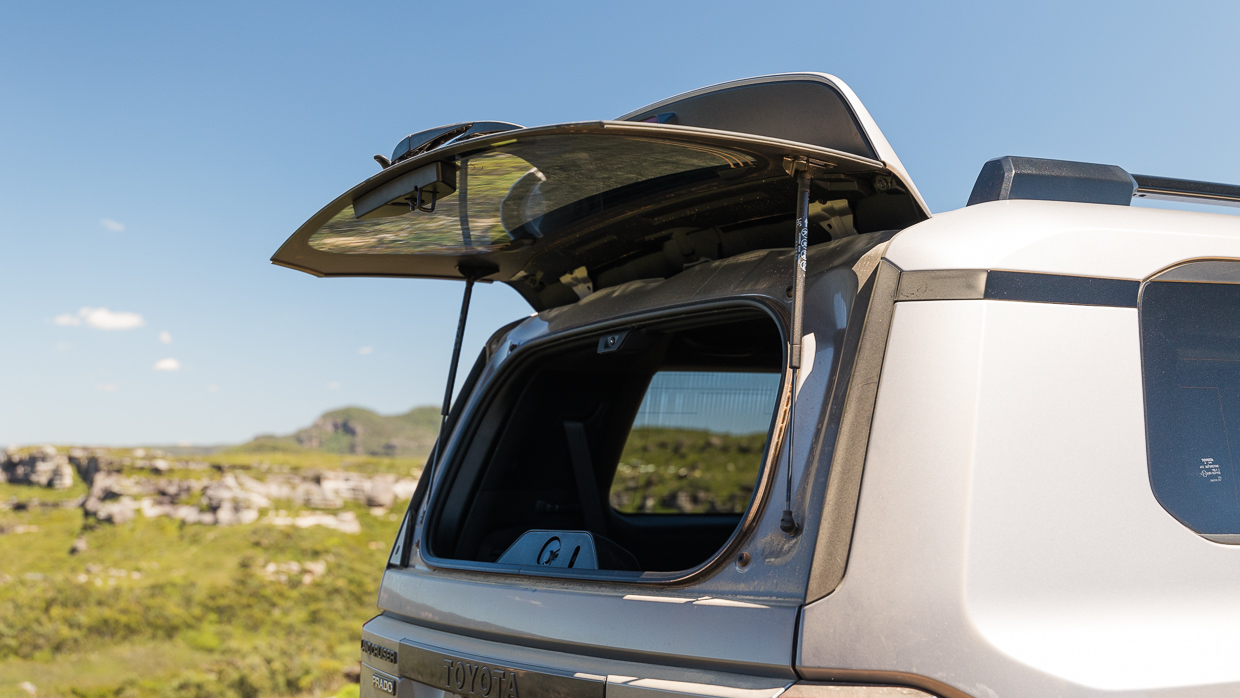
Toyota’s attempt at extending an even compartment area is almost comical – a removable oblong storage box that matches the height of the folded seats but feels very fragile. The set-up leaves numerous awkward gaps.
Access to the boot is at least improved with a switch from side-hinged to roof-hinged tailgate, which is also powered and retains the separate opening glass hatch from the former flat-tailgate option.
The previous Prado was okay to drive, though felt better on the open road than around town where its steering felt leaden and the brake pedal felt wooden.
Now the Prado’s steering is far better weighted, plenty accurate, and it’s geared quick enough to limit excessive arm movements when negotiating the likes of tight back streets and small roundabouts. Nimble it is not, however; the big, blocky new Prado feels fairly bulky around town – more so than a Ford Everest.
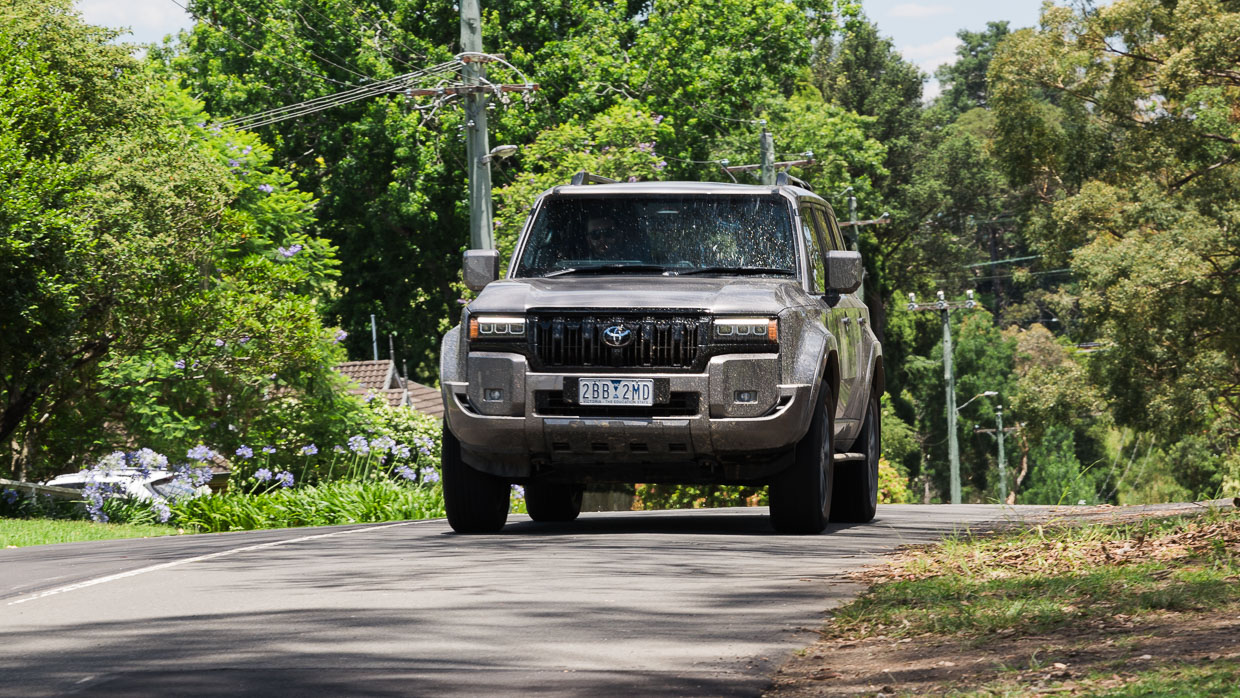
Progressive brakes pull up well from speed, and another blessing is the absence of intrusive, annoying ‘driver-assist’ systems that contradict their intention.
The Prado aces long-distance driving. Front-seat comfort is excellent, including a Kakadu-exclusive cushion extender for the driver, and it’s especially quiet on the freeway.
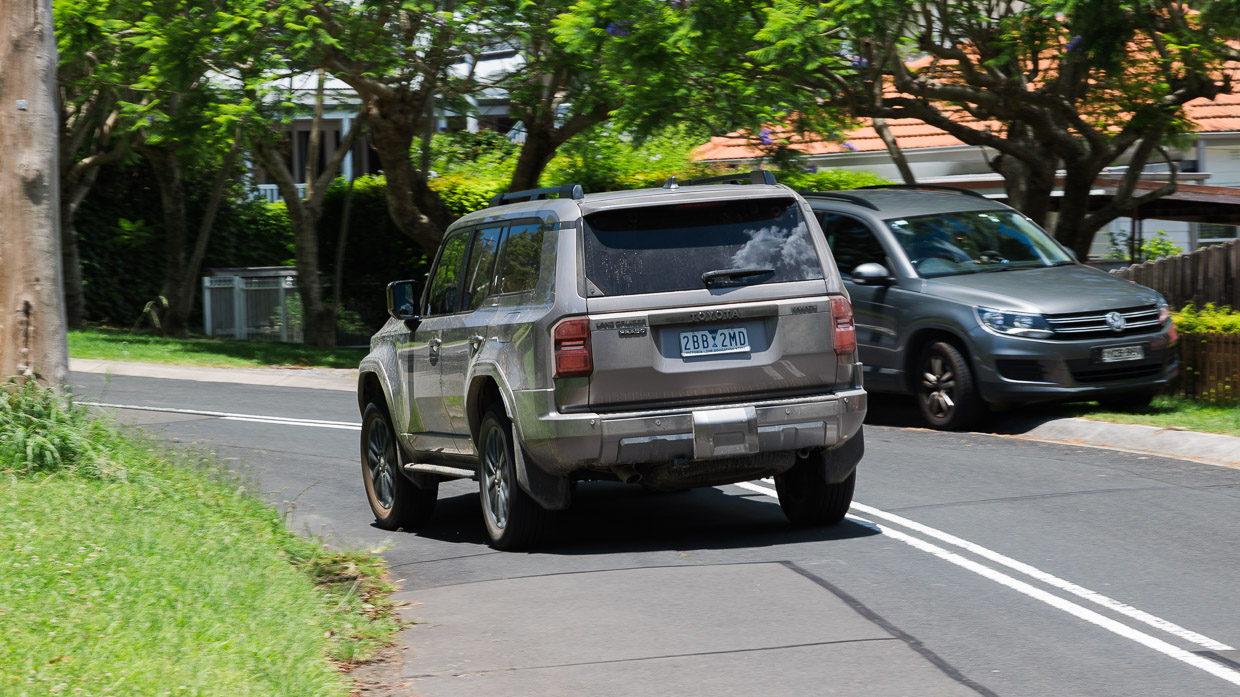
It’s here that the four-cylinder turbo diesel is at its most muted, there’s minimal road noise from the 20-inch Yokohama Geolander tyres, and only some mild wind rustle around the windscreen.
The eight-speed auto is a smooth operator, too.
Asking for more performance from the turbo diesel reveals engine noise that is less agreeable to the ears, as well as acceleration that’s slower than ideal for overtaking or jumping into traffic gaps.
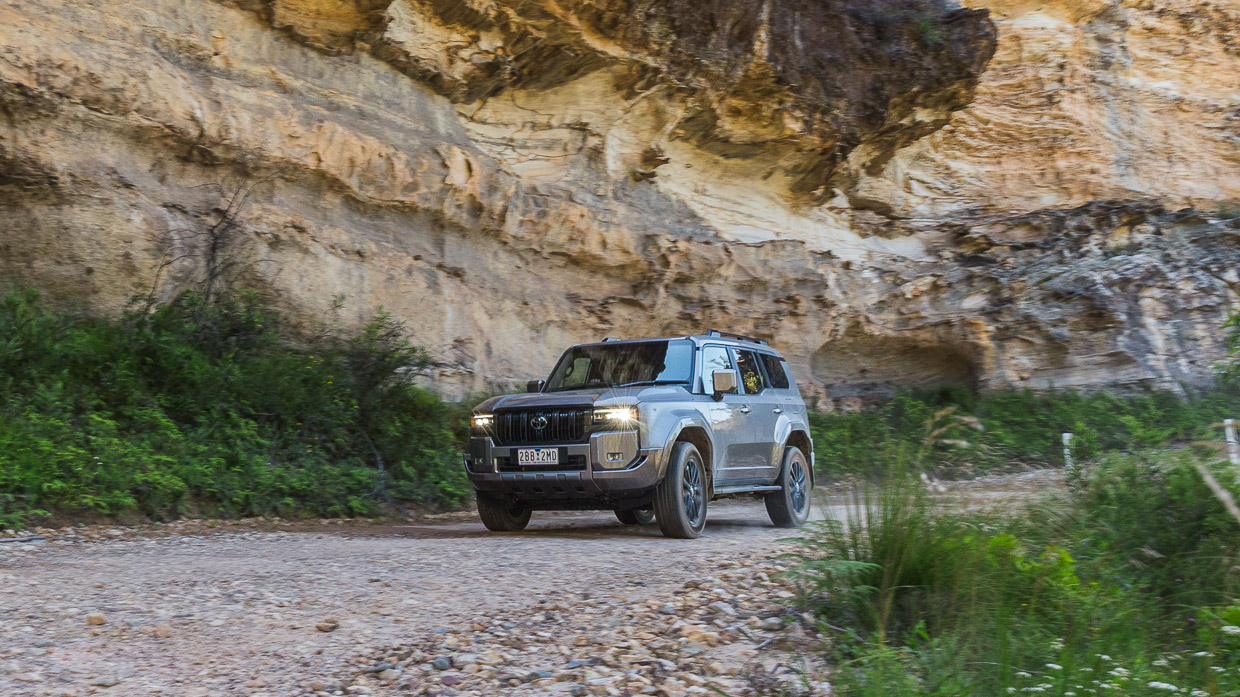
The ladderframe chassis and solid-rear-axle suspension combination struggles most on poorly surfaced country roads – where the Prado’s body porpoises and shudders.
There’s some notable body roll around corners, too, though the handling is generally good, including good grip from the tyres.
The Prado carries a maximum five-star ANCAP independent crash-test rating, with solid scores across adult protection, child protection, vulnerable road user protection, and safety assist systems.
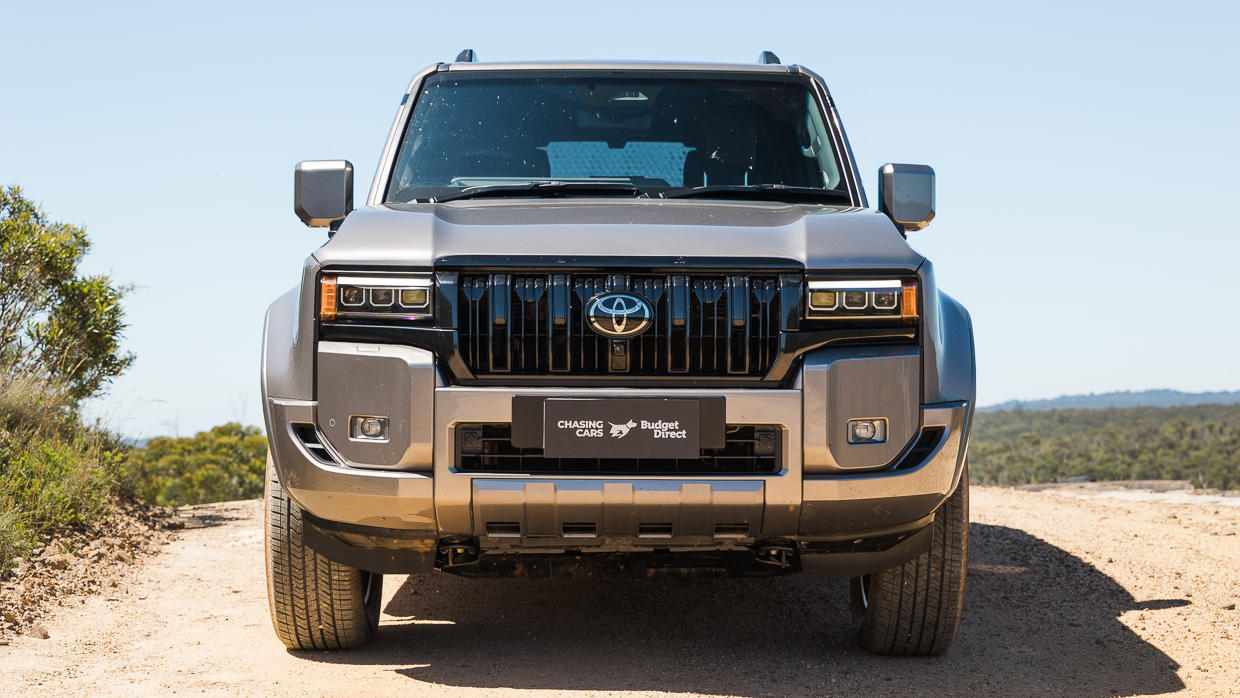
Standard safety inclusions for the Prado Kakadu are:
The Prado has official fuel consumption of 7.6 litres per 100km, and in various tests we’ve seen trip computer readouts between 11.3 and 8.0L/100km.
After a refill at the end of our circa-450km road test, our tested consumption figure landed at 10.6L/100km.
That would still deliver more than 1000km of theoretical touring range thanks to a 110-litre tank, even if that’s a 40-litre drop in capacity over the previous model.
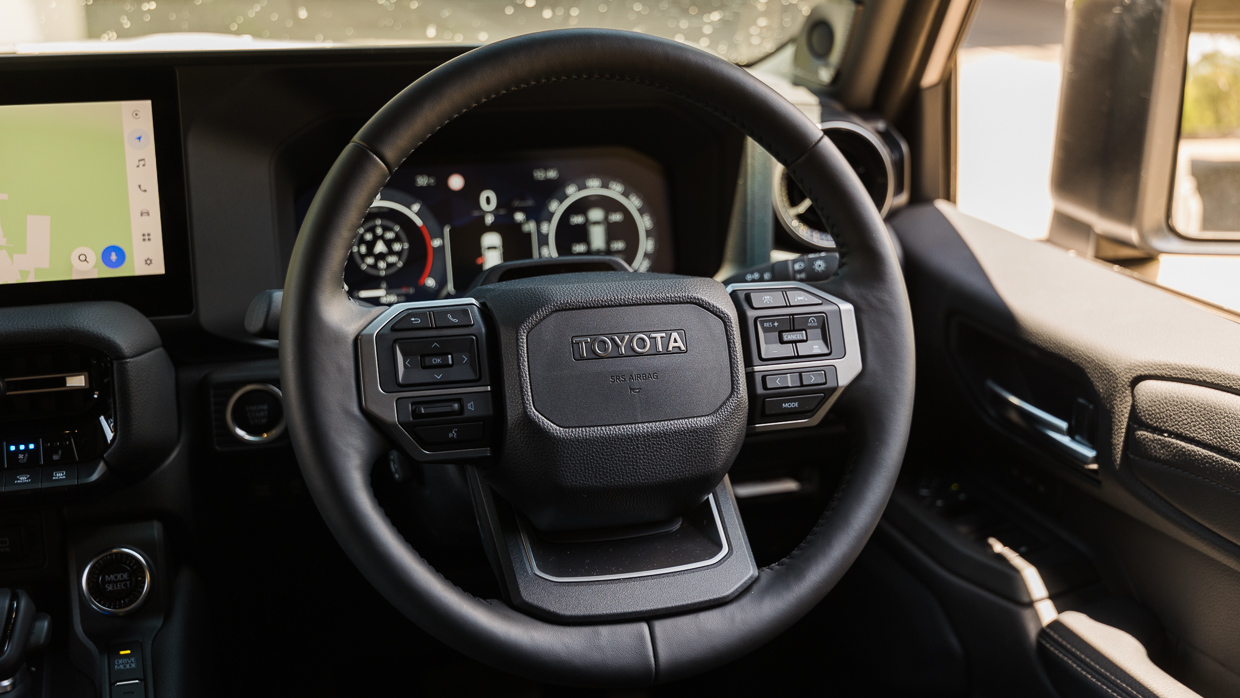
Emissions-aiding AdBlue is also required, every 8500km or so.
Toyota service costs are almost always reasonable and Prado visits are just $390 each time. The downside is that intervals are set at 10,000km or every six months, so owners face nearly $4000 in capped maintenance costs across five years.
Toyota’s warranty period is the industry average of five years.
A compromised boot compartment and a third row that’s not great for adults are just two areas that fall into the Demerit column for the new Prado, and you can add a significant price increase across the range.

This includes pushing the top-spec Kakadu above $100,000 and closer to its posher twin, the Lexus GX with its lusty petrol V6.
We lean towards the Ford Everest when considering a far more natural rival to the Prado, though Toyota’s new-generation family SUV still scores enough merit points to be more than worthy of consideration.
Key specs (as tested)
About Chasing cars
Chasing Cars reviews are 100% independent.
Because we are powered by Budget Direct Insurance, we don’t receive advertising or sales revenue from car manufacturers.
We’re truly independent – giving you Australia’s best car reviews.
The estimate provided does not take into account your personal circumstances but is intended to give a general indication of the cost of insurance, in order to obtain a complete quote, please visit www.budgetdirect.com.au. Estimate includes 15%^ online discount.
^Conditions Apply
Budget Direct Insurance arranged by Auto & General Services Pty Ltd ACN 003 617 909(AGS) AFSL 241 411, for and on behalf of the insurer, Auto & General Insurance Company Limited(ABN 42 111 586 353, AFSL 285 571).Because we don’t know your financial needs, we can’t advise you if this insurance will suit you. You should consider your needs and the Product Disclosure Statement before making a decision to buy insurance. Terms and conditions apply.
Indicative quote based on assumptions including postcode , 40 year old male with no offences, licence suspensions or claims in the last 5 years, a NCD Rating 1 and no younger drivers listed. White car, driven up to 10,000kms a year, unfinanced, with no modifications, factory options and/or non-standard accessories, private use only and garaged at night.
^Online Discounts Terms & Conditions
1. Discounts apply to the premium paid for a new Budget Direct Gold Comprehensive Car Insurance, Third Party Property Only or Third Party Property, Fire & Theft Insurance policy initiated online on or after 29 March 2017. Discounts do not apply to optional Roadside Assistance.
2. Discounts do not apply to any renewal offer of insurance.
3. Discounts only apply to the insurance portion of the premium. Discounts are applied before government charges, taxes, levies and fees, including instalment processing fees (as applicable). The full extent of discounts may therefore be impacted.
4. We reserve the right to change the offer without notice.